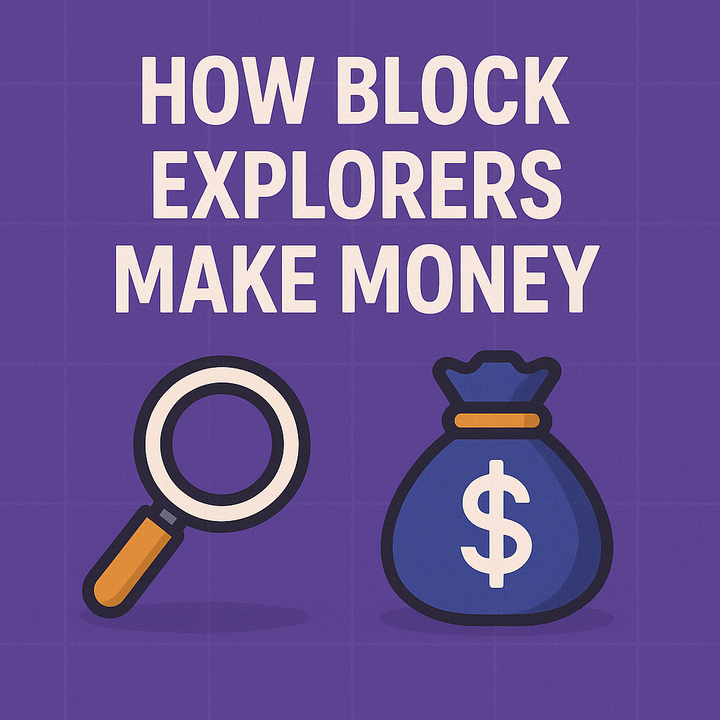Breaking the Institutional Advantage: How Hyperliquid and Mitosis Challenge DeFi's Status Quo Through Democratization

Finance is humanity's greatest invention. It is the only effective way to coordinate human effort across time and space. Yet, the legacy financial system contradicts its underlying goal of empowering individuals
This powerful statement from Jeff[1], leader of Hyperliquid Labs, highlights a significant concern with the legacy financial system.
Addressing Fundamental Market Challenges
Crypto emerged as a solution to this problem, with Bitcoin allowing any two willing parties to transact directly with each other without the need for a trusted third party[2] and Ethereum laying the foundation of modern DeFi with its intent to create an alternative protocol for building decentralized applications[3].
However, despite the breakthroughs in blockchain technology pioneered by colossi like Bitcoin and Ethereum, which were meant to stem the tide of those issues, the concern highlighted by Jeff has also permeated the entire DeFi ecosystem.
This desire for democratization failed to exclude privileged insiders who continue to operate both the legacy and on-chain financial systems. Thus, individuals remain trapped in opaque, centralized structures that oftentimes resist technological innovations, which may threaten specific foundations, institutions and shadowy operators. The very problems blockchains were designed to solve have evolved and persisted within the ecosystem itself.
This environment of fractured finance and concentrated power has created the perfect catalyst for the emergence of Hyperliquid and Mitosis. Despite targeting different pain points, these L1 blockchains share a striking philosophical alignment: "community first".
Both recognize crypto’s fragmentation and seek to restore balance by democratizing financial access and dismantling institutional advantages. They represent not just technical innovations, but a renewed commitment to blockchain's original promise: creating financial systems that genuinely empower individuals rather than entrenching existing power structures.
Introduction to Hyperliquid
Hyperliquid represents a paradigm shift in DeFi, positioning itself as “The Blockchain To House All Finance”.
Launched with a vision to unify the fragmented crypto landscape, Hyperliquid has rapidly emerged as a high-performance Layer 1 blockchain specifically optimized for financial applications, with a fully on-chain order book perpetuals exchange at its core.
Hyperliquid distinguishes itself through its commitment to true decentralization and community ownership. Its Genesis Event distributed wealth to thousands of early believers and users rather than privileged insiders, echoing Bitcoin's original ethos.
The platform's architecture operates on HyperBFT consensus, enabling validators to secure the network proportionally to their staked native tokens. This foundation supports both native financial components and a general-purpose EVM, allowing seamless interaction between high-performance applications and user-built projects[4].
Introduction to Mitosis
Mitosis emerges as a complementary innovation in the DeFi space, introducing a network peculiarly designed to transform liquidity into a programmable primitive. While traditional DeFi suffers from a lack of fair market price discovery, capital inefficiency, and unstable liquidity provision, Mitosis offers a solution through three core innovations: democratized access to preferential yields, liquid LP positions, and a sophisticated liquidity capital market.
Built on the Cosmos SDK with CometBFT consensus and featuring a full EVM-compatible execution layer, the Mitosis Chain provides the infrastructure for a comprehensive liquidity capital market. This enables sophisticated financial applications that treat tokenized liquidity positions as fundamental components, allowing for innovative strategies in risk management, capital efficiency, and yield optimization[5].

Divergent Paths to DeFi's Future: Consolidation vs. Interoperability
The decentralized finance landscape continues to evolve rapidly, with new projects proposing different architectural visions for how the ecosystem should develop. Among these visionaries, Hyperliquid and Mitosis stand out with their distinct approaches to solving DeFi's current challenges.
While both aim to enhance financial accessibility, efficiency, and programmability, they fundamentally disagree on whether the future of finance should exist on a single, unified chain or across an interconnected network of specialized blockchains.
Let's examine how each project envisions the architecture of tomorrow's financial systems.
Hyperliquid's All-Encompassing Financial Hub
Hyperliquid positions itself as "The Blockchain To House All Finance," pursuing a vision where crypto fragmentation becomes obsolete.
Their foundation is a hyper-performant L1 optimized from the ground up, capable of processing 100,000 orders per second with sub-second latency. This approach aims to consolidate all financial activities onto a single chain where native components like perpetual markets, spot trading, and order books operate alongside user-built applications in the HyperEVM environment.
As evidenced by their flagship DEX and growing ecosystem, Hyperliquid is executing a sort of centralization vision - not of power, but of infrastructure - creating a unified state where performance, liquidity, and programmability coexist without compromise.
Their objective is clear: to become the singular destination housing all financial activities, reversing the current fragmented state of crypto finance.
Mitosis's Multi-Chain Liquidity Framework
While Hyperliquid seeks consolidation, Mitosis accepts the reality of blockchain diversity and builds around it.
As a "Network for Programmable Liquidity”, Mitosis recognizes that multiple chains will continue to exist and focuses on enhancing cross-chain liquidity through tokenization and standardization. Their approach transforms illiquid LP positions into programmable tokens (miAssets and maAssets) which are utilized by innovative frameworks like Ecosystem-Owned Liquidity (EOL) and Matrix.
Instead of forcing activities onto one chain, Mitosis's vault infrastructure enables secure asset custody across multiple networks while maintaining user exposure to generated yields.
The Mitosis Chain provides the technical foundation for a refined liquidity capital market, but rather than trying to replace existing chains, it serves as a coordination layer that democratizes access to preferential yields across the entire DeFi landscape. This modular architecture acknowledges blockchain plurality as inevitable and focuses on creating bridges rather than consolidating destinations.
Community First: A Shared Vision in Hyperliquid and Mitosis
In the evolving landscape of decentralized finance (DeFi), both Hyperliquid and Mitosis embrace a "community first" ethos, recognizing that their ecosystems’ strength lies in user empowerment and collective participation.
Both platforms aim to dismantle traditional barriers that have historically favored insiders, fostering environments where every participant can contribute to and benefit from the financial innovations that these decentralized systems offer.
This commitment to community engagement shapes their value propositions, ensuring that users are at the forefront of their respective projects.
Hyperliquid: Democratizing Financial Instruments
Hyperliquid consolidated community participation by implementing a comprehensive points-based system that culminated in what many consider crypto's largest wealth creation event.
Unlike traditional token launches dominated by venture capitalists, Hyperliquid's Genesis Event distributed tokens based on genuine platform engagement tracked via a one-year point program (November 2023-2024)[6].
The points accrued rewarded users who contributed to the protocol’s success, incentivizing early participation while ensuring broad community benefits.
Perhaps most revolutionary was their democratization of market making through the Hyperliquidity Provider (HLP) vault.
This community-owned vault provides liquidity to Hyperliquid through multiple market making strategies, performs liquidations, and accrues platform fees. Operating this way, Hyperliquid didn’t boostrap liquidity from predatory deals and didn’t raise skepticism by giving people the impression of asymetric information plaguing other projects in the space. The vault was (and still is) public, transparent in all its aspects, and all the market making profits were redistributed to the community.
This innovation allowed community members to earn returns proportional to their vault share from activities traditionally reserved for privileged market makers and exchange operators, effectively dismantling hierarchies that plagued earlier CEXs and DEXs, and creating an egalitarian financial system where participants share in the exchange's success.
Mitosis: Continuous Value for Cultural Contributors
Mitosis has further evolved the community rewards paradigm through its multi-layered rewards program, which combines immediate incentives with long-term governance alignment.
By implementing a points system with numerous multipliers in Mitosis Expedition - including epochs, chains, holding duration, and social media boosts - it incentivizes both early and sustained participation[7].
What truly differentiates their approach from competitors is the continuous reward mechanism powered by their Morse NFT project (based on the DN404 repository), which enables fractional, on-chain value distribution to ecosystem’s contributors (creating illustrations, designs, articles, social media posts, etc.).

This system transcends the traditional "token at mainnet launch” model by providing ongoing, quantifiable compensation for every contribution, addressing the participation inequality that has historically limited genuine decentralization. Rather than creating an early pre-sale dynamic under promises of future value, it establishes a flourishing ecosystem where value accrues to active community members in real-time.
Mitosis: Transforming Liquidity into a Programmable Primitive
By tokenizing liquidity positions and creating elaborate market structures, Mitosis enables all users to access favorable yields previously reserved for whales and institutions.
The protocol implements this vision through two complementary frameworks: Ecosystem-Owned Liquidity (EOL) and Matrix.
EOL aggregates individual liquidity providers into a collective force with genuine bargaining power. For example, when a small holder deposits ETH into the EOL framework, they receive miETH tokens that represent their share of the pooled liquidity. These tokens confer not only economic rights to underlying assets and yields but also governance power to vote on liquidity allocation. A retail user with little funds available can participate in governance decisions directing millions in aggregated liquidity to protocols offering the most competitive terms - leverage previously available only to major institutions and whales.
Matrix operates as a curated marketplace for time-bound liquidity campaigns, where protocols seeking capital offer enhanced yields in exchange for committed liquidity. For instance, a new DEX might offer 15% APY for six-month liquidity commitments through Matrix, versus 8% to the general public. Users supplying Vanilla Assets to these campaigns receive maAssets (like maETH) representing their position. These maAssets become composable building blocks that can be utilized within the broader Mitosis ecosystem, enabling capital efficiency optimization while maintaining consistent exposure to their underlying assets and the relative generated yields.
Unlike traditional LP positions, Mitosis's tokenized representations maintain trading capability and valuation transparency. This programmability transforms DeFi liquidity into a market where retails participants have access to the same tools previously available only to institutional players with extensive resources and connections.
Strategic Expansion: Mitosis Embraces Hyperliquid Through Theo's Integration
The next evolution in Mitosis's vision of interoperable liquidity is already materializing through their first strategic partnership with Theo. As detailed in the Theo Straddle announcement[8], this collaboration creates a “bridge” between Mitosis and Hyperliquid's ecosystems.

The mechanism works elegantly: users deposit weETH or miweETH into Mitosis Matrix Vaults on Ethereum, Arbitrum, or Linea. During each vault round, deposited capital is deployed to Aave as collateral to borrow USDC against, which is then bridged to Hyperliquid to establish the short position in Theo's delta-neutral strategy.
This cross-chain capital coordination enables Mitosis users to capture ETH funding rates on Hyperliquid while maintaining liquidity exposure through programmable maAsset positions. And that it not all, because following Mitosis Matrix Vault value proposition, depositors will also be eligible for Theo tokens and MITO Points on top of the Straddle yield.
This is not only beneficial for Mitosis Expedition participants, but also for Theo itself, because due to the maturity structures in place they can rely on long-term liquidity to scale their product and bootstrap an active community as well. This is the caterpillar of Matrix Vaults’ vision; the successful implementation of this first vault will create a network effect that will support its ecosystem growth, where Mitosis itself, its users and participating protocols will all benefit in unison.
What makes this integration particularly powerful is how it demonstrates Mitosis's ability to harmonize liquidity across distinct blockchain architectures.
Future Implications and Critical Questions
As we've explored throughout this analysis, Hyperliquid and Mitosis represent two distinct yet complementary visions for addressing DeFi's most persistent challenges. Their emergence signals a pivotal moment in blockchain's evolution - one where the industry returns to its founding principles of democratization and accessibility while simultaneously advancing technical capabilities.
Hyperliquid's approach of consolidating financial activities onto a single high-performance chain directly challenges fragmentation, creating an environment where all participants can access previously gatekept market-making opportunities. Mitosis, meanwhile, embraces blockchain diversity by transforming illiquid positions into programmable primitives that work across the entire ecosystem, enabling sophisticated capital coordination previously available only to institutional players.
Mitosis and Hyperliquid are united by their core philosophies and shared commitment to dismantling insider privilege. Both platforms have implemented innovative community distribution mechanisms that prioritize actual users over venture capitalists, demonstrating that technical advancement and equitable governance can evolve in parallel.
As Hyperliquid and Mitosis continue to develop their respective ecosystems, several profound questions emerge about the future of decentralized finance:
Will these community-first models establish a new standard for protocol launches, making traditional VC-dominated token distributions obsolete?
How might traditional financial institutions respond to genuinely democratized DeFi infrastructure?
Perhaps most significantly, what happens when truly democratized financial primitives reach global scale?
These innovations arrive at a central moment when centralization trends in both traditional finance and early cryptocurrency projects have disappointed many. Hyperliquid and Mitosis represent not just technical advancements but potential catalysts for a more profound socioeconomic transformation - one where financial power flows to active participants rather than entrenched gatekeepers.
References:
[1] https://x.com/chameleon_jeff/status/1862885996846805222
[2] https://bitcoin.org/bitcoin.pdf
[3] https://ethereum.org/en/whitepaper/
[4] https://hyperliquid.gitbook.io/hyperliquid-docs/hyperliquid-l1/l1-overview
[5] https://docs.mitosis.org/assets/files/mitosis-litepaper-6e8de95ce2bb14f8c2d2ffc8c272b9f3.pdf
[6] https://hyperliquid.gitbook.io/hyperliquid-docs/points
[7] https://docs.mitosis.org/docs/learn/governance/expedition-weeth/participation-benefits
[8] https://blog.mitosis.org/blog/introducing-straddle-supply-opportunity-with-mitosis
Mitosis Website | Mitosis X (prev. Twitter) | kumatycoon X (author)







Comments ()